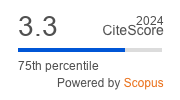Article | Open Access
Propagation of Hate Speech on Social Network X: Trends and Approaches
| Views: | 2423 | | | Downloads: | 10173 |
Abstract: Digital technologies have democratized the transmission of information, enabling individuals to interact and share information instantly through social networks. However, these advancements have also brought about negative aspects such as the propagation of hate speech on social media. This research aims to address the following question: What are the predominant theoretical and methodological approaches in academic research on hate speech on X (formerly known as Twitter)? This study aims to identify and analyze the trends in existing academic research on the proliferation and dissemination of hate speech on the social network X, to provide a comprehensive overview of the current state of knowledge in this field, and to highlight areas for future research. To conduct this analysis, a mixed‐methods methodology is employed and a systematic literature review is applied as the research technique. Quantitative analysis involves descriptive statistical analysis, while qualitative analysis is conducted using a deductive strategy to study the predetermined categories of research included in this study. Among the main contributions is the integration of findings from multiple studies, facilitating the understanding of this phenomenon, as well as enabling the identification of best practices and existing knowledge gaps in this field.
Keywords: academic analysis; digital interaction; hate speech; social conflict; social network X; Twitter
Supplementary Files:
Published:
© Eva Matarín Rodríguez‐Peral, Tomás Gómez Franco, Daniel Rodríguez‐Peral Bustos. This is an open access article distributed under the terms of the Creative Commons Attribution 4.0 license (http://creativecommons.org/licenses/by/4.0), which permits any use, distribution, and reproduction of the work without further permission provided the original author(s) and source are credited.


